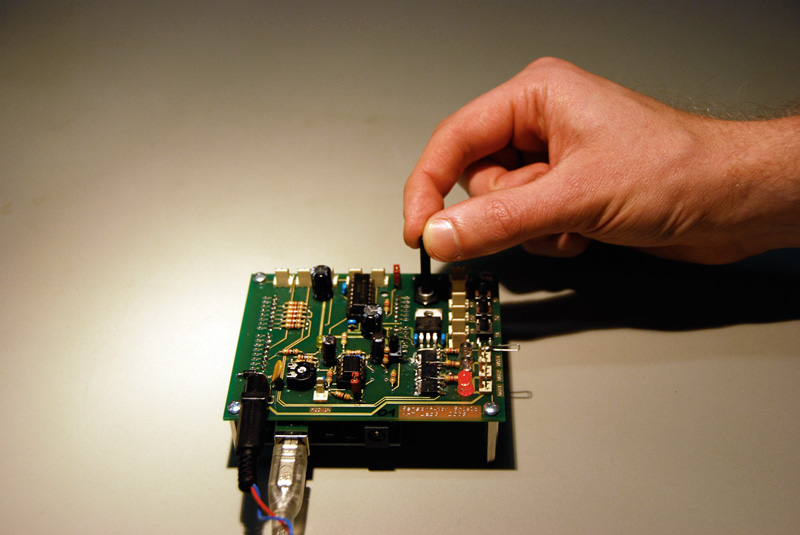Using Sensor to fade LED
Basic example using a sensor to fade a LED.
/* sensor to fade LED
*
* using sensor to fade LED (e.g. poti sensor)
*
* SensorAktor Workshop
* Lab3 2008
* Kunsthochschule fuer Medien Koeln
* Academy of Media Arts Cologne
* http://interface.khm.de
* pin mapping SensorAktor Shield
* import SensorAktor.h to get already defined mapping
*
* analog inputs: analog0 = pin0, analog1 = pin1, analog2 = pin2,
* analog3 = pin3, analog4 = pin4, analog5 = pin5
* built-in poti: poti = pin5
* amplified input: mic = pin0
* switches: switch1 = pin1, switch2 = pin2, switch3 = pin3
* leds: led1 = pin3, led2 = pin5, led3 = pin6
* power outs: out1 = pin3, out2 = pin5, out3 = pin6
* motor outs: motor1_1 = pin8, motor1_2 = pin13, motor2_1 = pin11, motor2_2 = pin12
* motor pwms: pwmMotor1 = pin10, pwmMotor2 = pin9
* servo outs: servo1 = pin2, servo2 = pin4, servo3 = pin7
*/
// import sensor aktor library for pin mapping
#include <SensorAktor.h>
// sensor value
int sensorValue = 0;
// this block is executed one time when programm starts
void setup(){
// set pin modes
pinMode(led1,OUTPUT);
}
// this block is executed in a loop after setup is called one time
void loop(){
// read sensor (value between 0 and 1023)
sensorValue = analogRead(poti);
// scale sensor value to use it with analogWrite (value between 0 and 254)
sensorValue = map(sensorValue, 0 , 1023, 0, 254);
// fade LED according to the scaled sensor value
analogWrite(led1,sensorValue);
}
Files needed
Since Arduino 0015 there are some problems with the old “SensorAktor.h” file.
Use this one instead.


